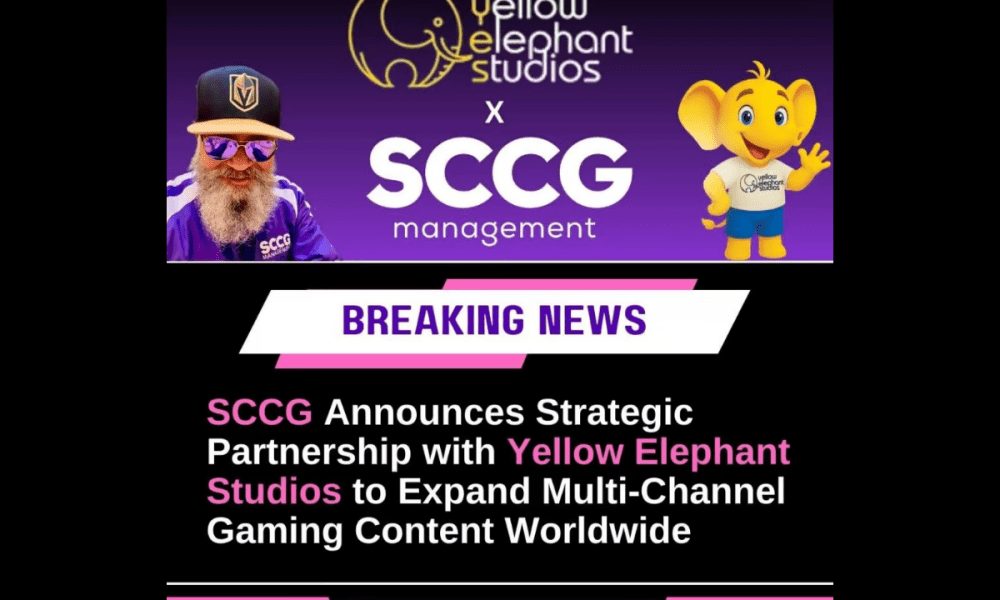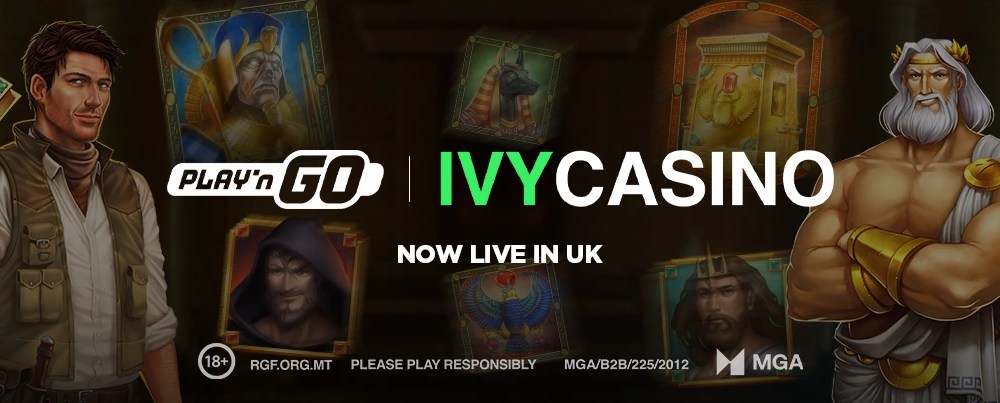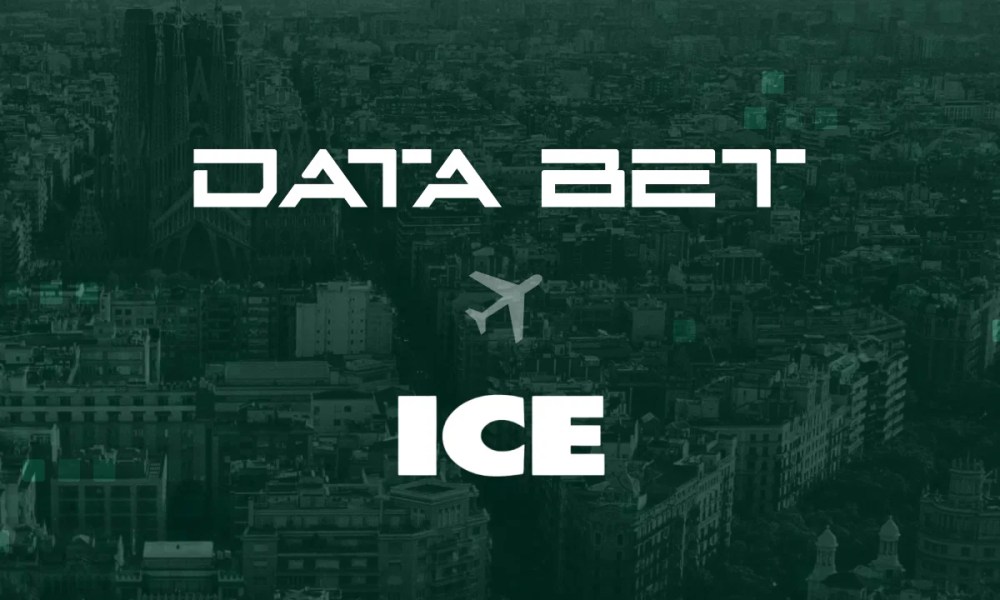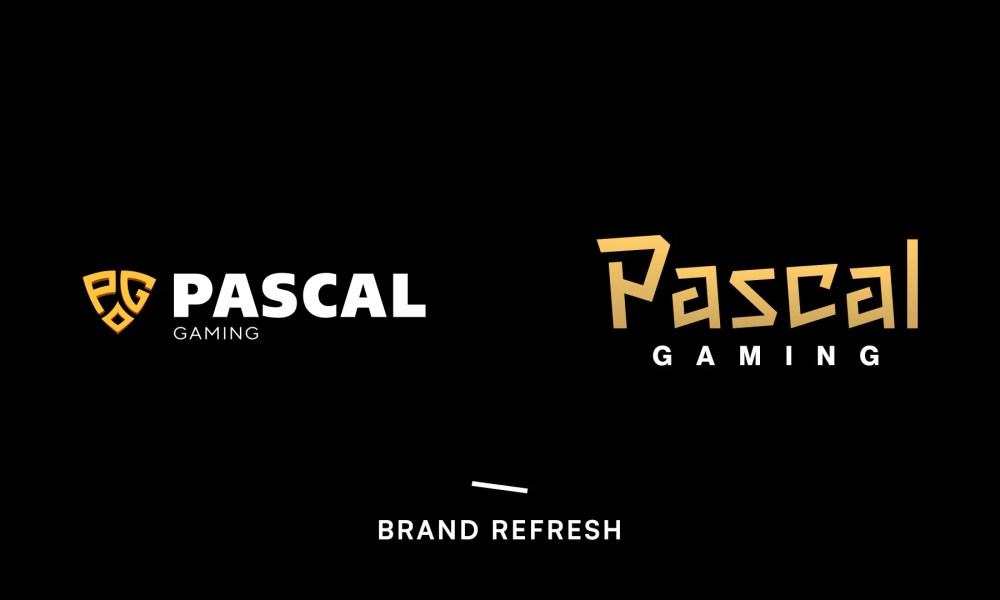European Gaming News
How B2B Buyers Search for Tech Solutions
Reading Time: 7 minutes
Information in today’s digital milieu has always been a double edged sword for sales and marketing. It works for you if you can control it. Information comes from your sales team, your website and your press releases. Outside that – it’s a free-for-all.
As we all know, the latter is the reality. What we often have to deal with is a highly-evolved B2B buyer, someone who’ve searched across several online platforms. And, according to The Digital Evolution in B2B Marketing, a 2014 research conducted by the Marketing Leadership Council of CEB (now known as Gartner) in partnership with Google, this person will not face a sales rep until 57 percent of their buyer’s journey is done.
So, it pays to ask: How do B2B buyers search for tech solutions and how can you ensure you’re there, at every stage of their buyer’s journey?
B2B Buyer Behavior
There have been several studies on today’s buyer behavior, and one stand-out commonality is that B2B buyers go online first before reaching out to a sales team (if ever they do).
A 2014 research by the Acquity Group, a digital marketing company under Accenture, pegs the number of B2B buyers who do online research at 94 percent. This is further broken down to the top go-to sites. Business websites lead at 84.3 percent; this is followed closely by 77 percent who turn to Google search. Other notable online resources include third party websites (34%), such as blogs and industry websites, and online user reviews (41%).
Analytics Advocate at Google Adam Singer confirms this at a ClickZ Live conference in San Francisco and adds that a person, on average, checks out 10.4 online resources before reaching out to a sales rep.
The Digital Age Buyer’s Journey
The fact that a buyer faces a sales rep only at 57 percent into the journey is perhaps not the most disconcerting finding to come out of these recent B2B buyer studies. It also raises a red flag that a lot of people are looking for a self-service buying experience. 31 percent say they prefer an unassisted online purchase, with phone support only as a just-in-case. Another 10 percent say they want zero assistance; while 12.5 percent say they want to be walked through the purchasing process.
You can’t help but wonder where in the digital age buyer’s journey would the sales team figure in?
According to the CEB study, you only get a 12 percent mindshare (public awareness) for each typical buyer who goes through the buyer’s journey. This share spans across a variety of channels.
The Salesforce’s Pardot survey, 2013 State of Demand Generation Report, claims that 71.7 percent of buyers start with a Google search. This is followed by personal networks at 15.6 percent and social networks at 2 percent.
This brings us to a familiar B2B scenario, typical in today’s buyer’s journey: Say that your company is looking for a CTI solution that integrates your phone systems to your CRM. You get on the project and do an online research. This leads you to a variety of business websites, such as Salesforce and Tenfold. You also look into industry forums to see what your peers have to say about the many vendors in the CTI market. You read blogs, reviews and how-to’s to see if the system suits your requirements and has the flexibility that you need. Through your research, you come up with the top 3 vendors, which you then invite to present and bid.
This might sound like a good deal because a sales-ready buyer comes to you. But, consider too that in no part of their buyer’s journey are you able to influence and educate.
Instead, you function only as an order taker. Your buyer already has a preconceived idea of what you offer. It can be hard to sway them otherwise – unless you can overcome the three main hurdles in B2B marketing and sales: ineffective digital integration, unfocused content and an unoptimized mix of online channels.
Know the Modern B2B Buyer
But first, let’s get to know who the modern B2B buyer is.
The Millennial Influence
Forget what you believe in when it comes to the B2B buyer. He or she isn’t middle-aged and working a managerial or executive position. In fact, the B2B buyer is getting younger!
The Pew Research Center has found that millennials are the biggest generation cluster in the American workforce today. There is more than one millennial in every three employees in the job market. And, they are working closer and closer towards positions of influence, when it comes to B2B purchases.
According to a 2014 survey conducted by Google and research company Millward Brown Digital, millenials make up 46 percent of prospective B2B buyers. This data is up from 2012’s 27 percent, which signifies the growing influence of this generation.
Director of Business and Industrial Markets for Google, Mike Miller, says that this represents a “big shift in a two-year time span.” He believes that this is partly due to the retirement of baby boomers. A new powerhouse generation is emerging in the lead.
This requires rehashing old B2B marketing strategies that usually target senior-level executives. While millennials may still not hold positions of power, their influence is clear. They make up 24 percent of non-executives tasked to help in B2B purchasing decisions. This is a generation who grew up at a time when mobile phones and the internet were readily available. You can be sure they will use these access and mobility tools in B2B research and recommendations.
The Multiple-Channel B2B Buyer
The multiple-channel buyer is always connected and researching online through mobile phones, tablets and desktops. They have mobility and access. They read your websites, reviews and blogs; and might have even downloaded one of your demos. They attend conferences and seminars – sometimes online – to learn about industry breakthroughs and innovations. They can cover multiple channels partly because they’ve fully integrated mobility and the internet into their lives.
According to the Google/ Millward Brown Digital study, by 2014, 34 percent of those involved in B2B purchasing decisions use their mobile devices at each stage of their buyer’s journey. This is almost twice the devoted mobile users/ B2B buyers of 2012. Mobile phone usage extends to work places and social gatherings; and includes requests for bids, product comparisons, video viewing and contacting the vendor.
The increase in video viewing is another metric attributed to the multiple-channel buyer. According to YouTube, more than 895,000 hours of videos viewed are those by top B2B brands. In fact, 70 percent of those surveyed by Google say they use videos to learn more about products before making a purchase.
Information Overload
The availability of seemingly limitless information empowers the new B2B buyer. And because they access content at each step of their buyer’s journey, you too must be on this content train.
According to the Content Marketing Institute and MarketingProfs’s 2016 Benchmarks, Budgets and Trends – North America, 88 percent of marketers implement content marketing strategies. 76 percent of these say that they will include content marketing allocation by 2015. On average, 28 percent of the marketing budget go to content marketing. However, those who are most effective at it spend around 42 percent.
So, remember that the modern B2B buyer is swimming in a sea information. Your share shouldn’t just be a forgettable drop.
Influencing the Digital Age Buyer’s Journey
Perhaps there are several strategies you can study and implement in order to influence the new B2B buyer. However, at the core of it will always be the actions you take in dealing with modern B2B marketing and sales’ main hurdles: digital integration, content and channel mix.
Comprehensive Digital Integration
Your effective presence online should cease being treated like an annoying fly buzzing and tweeting about. Traditional marketing campaigns have been rendered obsolete by B2B buyers who are empowered with information. Their product learning can’t coincide with your campaign plans because they go about it on their own, online.
Here are a few steps to take to start a comprehensive digital integration program, according to the Marketing Leadership Council of CEB:
1.Document existing campaign architectures. Make sure to take note of effective strategies and their output.
2.Review marketing practices to see what works and what doesn’t. A dialogue with the sales and marketing team is necessary to get to the real score regarding these practices.
3. Observe and analyze external practices that have worked to get you closer to your goals.
4. Select, codify and implement best practices.
5. Recreate the campaign architecture and refine practices that don’t work as expected.
6. Repeat the process until you reach your ideal.
7. Put together an implementation guideline, as well as an accessible resource center for the guidelines, necessary tools and other information regarding your digital integration.
Purposeful and Focused Content
Many B2B marketers have taken on content marketing like it was the latest must-have trend. This has resulted in content that’s highly unorganized and lacks a consistent and purposeful message. You then get a whole slew of problems, such as prospective buyers swimming in a sea of useless information. This type of information does not really teach them well; and, it does not engage them enough to take the next step in their buyer’s journey with you.
There are several realities that might have factored into this situation. For instance, your web team may have been focused on ranking your website in search results, without being consistent and driving your true message. You might have outsourced your social media management, without providing guidelines on your corporate messaging.
It is important to rectify this, as soon as possible, because your customer engagement is centered on your content. It comes in at all stages of the buyer’s journey. It is at the core of your lead nurturing programs, and online and social media engagements. And, it is everyone’s responsibility – not just your copywriter’s.
This is where the so-called “coverage orientation” comes in. B2B marketers pinpoint topics that interest your target audience, and ensure that you consistently offer fresh content for each topic, through content development and curation. This can be a fruitful content marketing strategy, as long as you have a good understanding of your customers.
Make sure that you cover all your customers’ information requirements. This way, even as they learn about your product on their own, the information that they get still aligns with what you truly offer.
Smart, Targeted Channel Mix
Given several online channels, where should you invest in? Which channels will bring the most qualified leads? Should you invest in creating YouTube videos or simply blogging? Does your target audience need whitepapers or an online archive of manuals, issue reports and resolutions?
There are many ways to develop a targeted channel mix. However, the first step is to recognize your traditionally fragmented approach. The marketing team might be taking care of blogs and other creative text content. Your tech team might have been tasked with putting together your FAQs, whitepapers and other support pages. You might have outsourced your video production to an ad company, and your social media management to an SMM company.
However you’re doing it right now, it is important to account for your efforts, and assess your channel effectiveness. The metrics to use here are often readily available with the team tasked with each channel assignment.
Then, invest more in an expert analytics professional, someone who can accurately assess your channel efforts and audience response. Use your findings to put together a model channel mix, one that suits your target market and gets your messaging right.
Source: tenfold.com
Source: European Gaming News

European Gaming News
Could the Gambling Commission ban wagering requirements?
Wagering requirements; whether you love them or hate them, with the Gambling Review well underway, there’s never been a better time to debate if they still have a place in modern gambling and whether the upcoming review will ban them once and for all. But first, let’s look at their development and why they are a contentious issue in the industry.
What are wagering requirements?
Wagering requirements are a common term and condition attached to a bonus that prevents players from taking a promotion and withdrawing it immediately. They are applied differently by each gambling brand. Some, like PlayOJO, Paddy Power, MrQ and Betfair, have revolutionised the casino scene by offering no wagering bonuses. In contrast, others take the predatory route and list bonuses with up to 100x requirements (the average is around 30x).
The requirement is the amount a player must wager at the casino before any winnings made with a bonus are valid for withdrawal. In the case of a £100 bonus, a 30x requirement would mean a player must wager a total of 100×30=£3,000 before they could withdraw any winnings. Most players would easily decimate their winnings before fulfilling the condition and, as most bonuses expire within 7-14 days, may well be forced to play for periods, or at times, they otherwise might not.
Why do wagering requirements exist?
In the early days of online casinos, bonus hunting among players became widely popular. It led to forums where players shared information on where and how to profit from the best welcome bonuses, earning money from the available offers available and never playing at a site again.
As casinos began to notice players taking bonuses and withdrawing without using them fairly, they combatted the practice with wagering requirements and other terms, such as the ability to withdraw a bonus and any winnings made if an account was suspect of this activity.
However, with no limits or official licensing rules to regulate wagering requirements at that time, things soon got out of hand as operators set high limits that were and still are unattainable to most players. Additionally, in many cases, the terms and conditions were not clearly displayed or explained, leading to the confiscation of bonuses and winnings without players understanding how or why they’d fallen foul of the casino’s rules.
Wagering requirements under fire with UKGC
By 2014, and following a flood of player complaints, the Gambling Commission weighed in, creating the Gambling (Licensing and Advertising) Act which prescribed operators were to advertise their bonus terms and conditions clearly and explain them to players. This led to some reducing their requirements to more feasible levels. However, not all operators followed suit, hence why we’re still discussing wagering requirements today.
More recently, in February 2022, the UKGC set its sights on reforming wagering requirements again, issuing new guidance regarding fair and transparent terms and practices, which acknowledged that wagering requirements could lead to excessive play, not in line with social responsibility rules for operators.
The new guidance rules cited that licensees used potentially unfair terms, with examples including:
- “terms that allow licensees to confiscate customers’ un-staked deposits
- terms regarding treatment of customers’ funds where a licensee believes there has been illegal, irregular or fraudulent play
- promotions for online games that have terms entitling a licensee to void real money winnings if a customer inadvertently breaks staking rules
- terms that unfairly permit licensees to reduce potential winnings on open bets.”
It also stated that the Commission was aware of:
- “terms and conditions that are difficult to understand
- welcome bonus offers and wagering requirements which may encourage excessive play.”
While the guidance did not contain rules for abolishing or limiting wagering requirements, they instructed licensees to review their terms and conditions to ensure they fit consumer protection laws and that; “The LCCP requires rewards and bonuses to be constructed in a way that is socially responsible. Although it is common practice to attach terms and conditions to bonus offers, the Commission does not expect conditions, such as wagering requirements, to encourage excessive play.”
Will wagering requirements be banned?
With the Gambling Review white paper currently overdue and keenly expected by all industry stakeholders, many wonder if it will cover wagering requirements or, more specifically, exclude them from casino practice. The Gambling Review aims to update the 2005 Gambling Act, fit for the modern age, and wagering requirements would undoubtedly slot into the remit of what’s being discussed, which includes greater player protections and affordability checks.
While it’s clear that some big-name operators and affiliates like No Wagering are pioneering the way in bringing zero wagering bonuses to players, many sites have not followed suit. This is despite clear evidence that players favour fairer bonuses (PlayOJO is one of 39 brands operated by the same parent company, it is the only one with zero requirements, and it’s the most successful of all, according to the company).
Realistically, we’re not sure that the new gambling regulations will ban wagering requirements completely (as we covered earlier, they do exist for a reason), but it certainly wouldn’t be beyond the imagination for there to be a maximum cap applied in the view that excessive requirements equate to excessive play.
What’s next for operators and bonuses if wagering requirements are banned?
Bonuses are one of the most important factors for players in picking between casino sites, and they make players feel lucky to score something for free straight off the bat (even if the wagering requirements mean this is not really the case).
If wagering requirements are banned, operators unwilling to offer bonuses without wagering requirements will have to return to the drawing board and reimagine rewards, especially welcome offers. Alternatively, they could begin competing based on other USPs, such as focusing more on the casino product to pull in the punters by offering unique games, making space for indie developers, having instant withdrawals, or gamified loyalty benefits and better loyalty clubs.
Moreover, it would present a fantastic opportunity for remote operators to move away from the tired system of matched deposit bonuses towards more exciting and fresher ideas like promo wheel spins, mystery gifts on first deposits, prize draws and so on. With brands including PlayOJO, Paddy Power, MrQ and Betfair already doing this, operators do not lack a blueprint to success, just the gumption to embrace a new model.
Bulgaria
Betway Bulgaria officially launches, offers live and bet-builder options
Another company has officially launched its activities in the growing niche of online betting in Bulgaria. But here we are not just talking about another operator licensed by national institutions, but about a leading brand worldwide. Betway is one of the largest bookmakers in Europe and globally, and the fact that it already offers its services in Bulgaria speaks positively about the development of the gambling business in the country.
Indications of an increase in the size of the industry appeared last year, when several operators received a permit to operate under Bulgarian jurisdiction. It is unlikely that this process will end with the official launch of betway bulgaria, rather the brand entering the country can be perceived by international operators as a positive assessment of the market in Bulgaria. What can we find at Betway besides the obvious – increased competition and of course more choice for consumers?
What do we find in the sports section?
Sports betting – this is the leading sector of the company, which started operations in 2006. The brand is associated with a number of teams in Europe such as Tottenham, Atletico Madrid, Leicester, Alaves, Belenenses, Werder, etc. Of course, the top championships in Europe are present in the latest betting platform, but that’s not all. Betway offers the opportunity to make predictions at less popular UEFA championships. The fans of the Bulgarian championship have options too. All matches of the First League are present in the bookmaker’s menu, and are offered with dozens of choices for each of them.
Real-time bets and long-term combinations
Live bets are a big thrill for many players. This option is present at Betway, and this also applies to the mobile version, of course. It is not difficult to detect current events – they come first when loading the platform. And with them the bookmaker really comes up with interesting offers, some of which are rare on the Bulgarian market. The outcome of the bets become clear in literally seconds if the next goal market or one of the performance options is selected.
In addition, the company accepts predictions with a much longer horizon. It is now standard to bet on who will be the champion in England, Spain, Italy or Germany. However, there are also specific markets and selections for certain teams – will Barcelona take the trophy this season, will Liverpool reach the final in at least one of the tournaments in which it participates, etc. And if users don’t find what they’re looking for in these offers, they can always turn to the betting menu. The bet-builder is still limited to one match, from which we can choose two or more selections until the desired odds are formed. This is the most appropriate way to optimize the bet according to personal preferences and therefore it is increasingly preferred by the players.
Betway’s first steps on the Bulgarian market are impressive. And this is just the beginning, we can expect even more in the near future.
European Gaming News
EveryMatrix inks RGS Matrix agreement with Wild Boars
EveryMatrix announces the second RGS Matrix partnership with Wild Boars, newly launched gaming studio that aims to bring creative storytelling and a fresh feel to the gaming industry.
Launched in 2019 as EveryMatrix sixth standalone solution, RGS Matrix enables gaming development teams to distribute, manage, and report upon a proprietary game product portfolio.
This ‘out of the box’ remote gaming server was built on an open architecture and caters for outstanding player experience, consistent deployment, and quicker content integration.
Mathias Larsson, Managing Director of RGS Matrix, says: “This is our second RGS Matrix agreement and it brings me a lot of joy to know that our solution starts gaining momentum in the market. Our remote gaming server aims to help the new generation of game builders by providing all the means to create, design, distribute and manage games.
“The team of Wild Boars is experienced, skilled and highly creative. I am looking forward to seeing their games live and appreciated by players in many countries.”
Oleksandr Yermolaiev, Managing Director of Wild Boars, comments: “We truly believe that choosing a right partner is crucial for success. For us, RGS Matrix and its remarkable team is just that partner. We are excited to use EveryMatrix solution, focus on what we do best and bring our innovative games to a wide range of operators, territories and players. RGS Matrix is dashing ahead and we are happy to join the ride.”
RGS Matrix powers slots and table games, and is currently certified for Malta, Latvia, Lithuania, Estonia, Sweden, Spain, Denmark, Romania, and Colombia, with many jurisdictions to come in the upcoming years.
-

 Latest News1 week ago
Latest News1 week agoSCCG Announces Strategic Partnership with Yellow Elephant Studios to Expand Multi-Channel Gaming Content Worldwide
-
Latest News3 months ago
Announcement: 25th September 2025
-
Latest News1 month ago
JioBLAST Launches All Stars vs India powered by Campa Energy: A New Era of Creator-Driven Esports Entertainment
-
Latest News3 months ago
The Countdown is On: Less Than 3 Months to Go Until The Games of The Future 2025 Kicks Off in Abu Dhabi
-
eSports1 month ago
CS:GO Betting Gains Momentum in the iGaming Sector
-
Latest News2 weeks ago
THE 2025 PUBG MOBILE GLOBAL CHAMPIONSHIP GROUP STAGE WRAPS UP WITH LAST CHANCE IN SIGHT
-
Latest News3 months ago
Evolution launches Sneaky Slots — a Bold New Slot Studio
-
Latest News3 months ago
Leading The Charge! Euronics Group Joins LEC As Official Electronics Retail Partner



















You must be logged in to post a comment Login